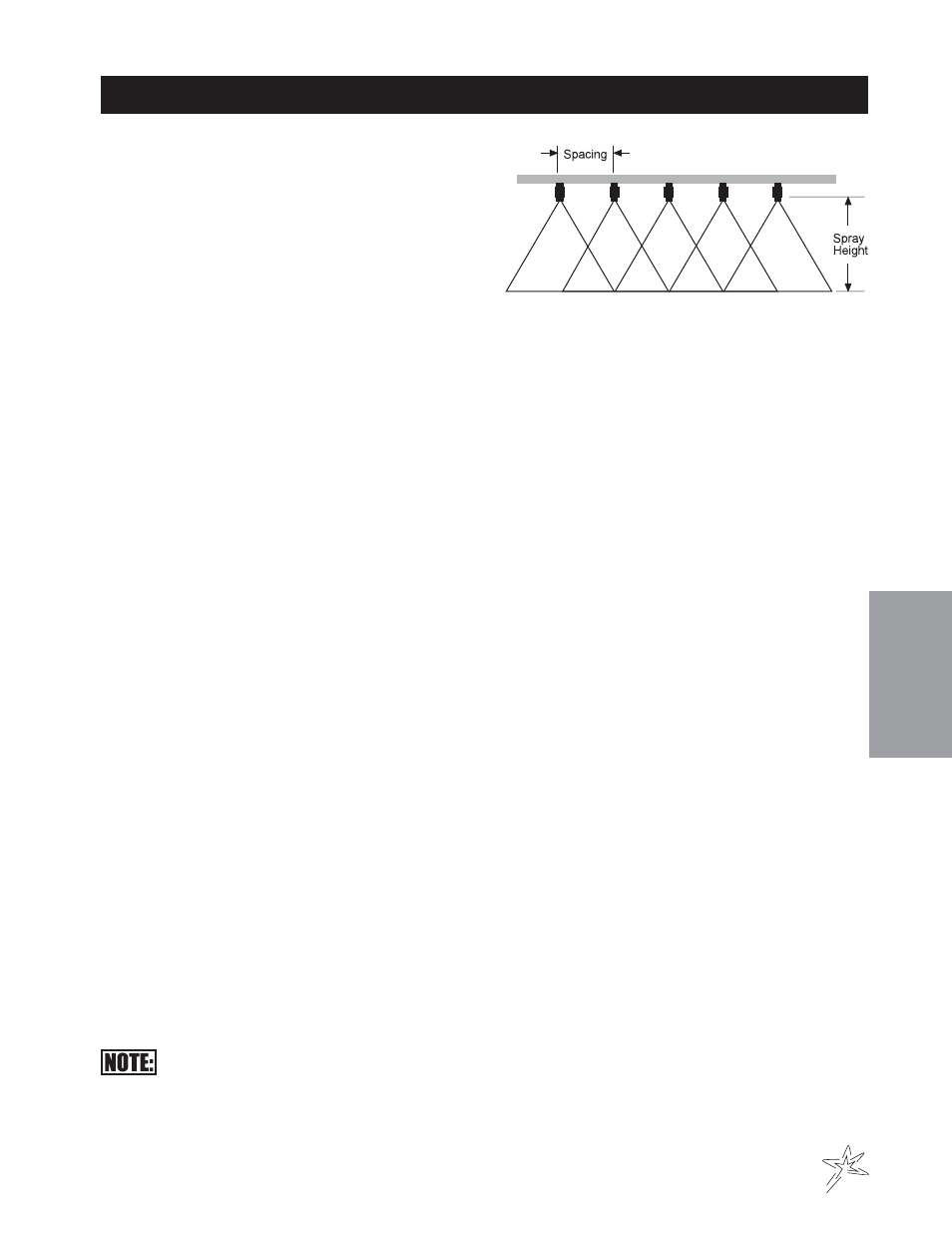Calibration introduction – Smithco Spray Star 1607P (1999) Operator Manual User Manual
Page 37

35
Spraying Procedures
CALIBRATION INTRODUCTION
Calibrating simply means to adjust a set of variables on
the sprayer in order to deliver the desired amount of
chemical to a known area of turf.
The job of calibrating the sprayer consists of balancing
these variables so that your sprayer delivers the desired
application rate. That is, an amount of chemical on a
given area. It is expressed as:
Gallons Per Acre (gpa) (1 US gpa = 0.83 UK gpa)
or Gallons Per 1,000 Square Feet (gpt)
or Liters Per Hectare (lph) (1 US gpa = 9.35 lph)
A number of acceptable methods for calibrating a turf sprayer are widely available. The calibration method
chosen must take these variables into account. They must include known ground speed (by measurement or
from an accurate speedometer) and nozzle output (gpm or lpm) from a nozzle chart or from actual measure-
ment. The variables are:
PRESSURE
Just as pressure increases the volume discharge rate, it also increases the application rate. Pressure must
increase by 4 times in order to double the application rate. Small pressure changes of 10 psi (1.4 bar) or less
do not greatly affect performance.
Pressure is established and maintained by a pressure control valve or by a flow control valve located on the
sprayer.
NOZZLE CAPACITY (VOLUME)
We have covered the different types of spray patterns of various nozzles and made our selection of type ac-
cordingly. We now have to choose a size which will provide the correct application rate.
Sizes are available for all requirements. Consult the nozzle chart in this manual for your nozzle type in order to
select the correct size.
TRAVEL SPEED
Increased travel speed decreases the application rate (gpa, gpt or lph). Travel speed must be safe and appro-
priate for the area to be sprayed.
Unlike pressure changes which have only a minor effect on application rate, ground speed changes have a
more major and direct effect. For example: A 50% decrease in ground speed means a 100% increase in appli-
cation rate. If the vehicle does not have an accurate speedometer, correct speed must be determined by timing
the sprayer travel over a measured distance. (Refer to the page in this manual titled, “Abbreviations and Con-
versions”.
To calibrate a sprayer, the user must:
1. Understand the Variables
2. Set those variables using one of the proven methods available.
3. Make a trial run and measure the output (use water, not chemical).
4. Determine the output.
5. Make adjustments to the 3 variables until the output is at the desired level.
This covers the principles of what must be known to prepare a sprayer for operation.
There are other acceptable and proven methods of calibrating a turf sprayer for application.
Other techniques may be more suitable depending on operational needs and technical compe-
tence of the operator.
